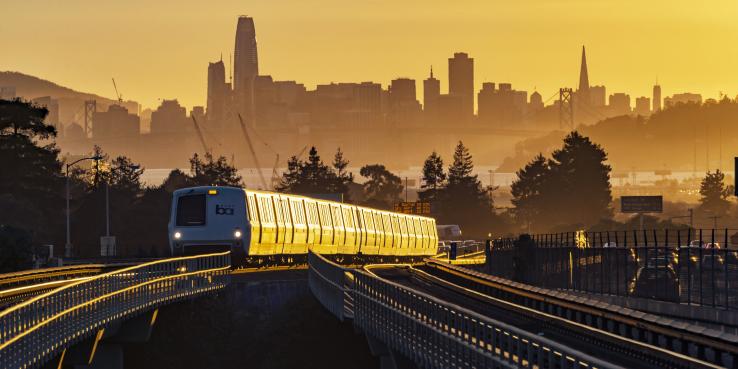This op-ed originally appeared in The Mercury News.
Over 40% of California’s greenhouse gas emissions come from the transportation sector, mostly from people driving alone. Our roads, planet and health can’t take much more. As our population continues to grow, we need to create more sustainable ways to get around.
Along with other sustainable modes, public transit needs to be a much larger part of California’s future. The state and federal governments are making extraordinary investments in infrastructure, but the cost of building these projects still exceeds what we have.
How do we avoid coming up short? By making sure public agencies are able to fund, plan, design and build quickly, cost effectively, fairly and with good public value.
There are plenty of reasons for doubt. According to the Eno Center for Transportation, construction costs in California are among the highest in the United States, which are the highest in the world. The Eno Center found California projects that involve tunneling will cost more than $1 billion per mile while costs in countries similar to ours average less than $350 million per mile.
The causes of these problems are known. Cumbersome standards, complicated utility relocations, litigious planning processes, funding programs that spread money around (but never enough for any one project to really move forward), low tolerance for community disruption and persistent requests for betterments from municipalities — all have contributed to delays and challenges in delivering projects.
There is no silver bullet solution but we must strive to do better.
The first step is to empower agencies to rigorously evaluate what they choose to fund and build — what and how we build are of equal importance. Politicians and public agencies often commit to projects and cost estimates too early, skewing funding decisions and public expectations. We need evaluation processes that ensure that the projects that get built align with the state’s goals for the climate, equity and the economy, and that the project sponsors are effectively managing project risks.
We also need to proactively address project governance, management and staffing. It needs to be easier for project sponsors to compete for and hire top talent from multiple disciplines from around the world and bring them together under one roof.
And we need to determine how to expedite things that take too long — like permits and approvals, utility relocation and securing enough funding to meaningfully advance a project. There is no perfect project, only good processes that consistently deliver better and speedier results.
We are hopeful. Many agencies are taking steps in the right direction. The Metropolitan Transportation Commission (MTC) is launching Transit 2050+, a service vision that, if successful, will help the region be more strategic about what to build. The Transbay Joint Powers Authority and its partners in San Francisco are proactively setting up project delivery oversight and management structures to de-risk the delivery of the Portal project. LA Metro established independent construction authorities to build up the institutional capacity to deliver major projects. The Gold Line and Expo Line Construction Authorities delivered two projects mostly on-time and on budget.
These types of solutions are routine elsewhere, but rare here. It doesn’t have to be this way. Each planning cycle and each project is a test of what we’re capable of. There is no better time to reshape our approach to infrastructure planning and delivery.
